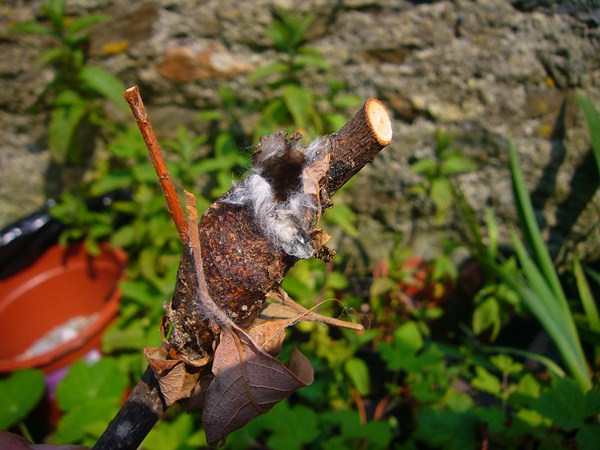Following a brief Black Kite, it all got a bit grotty. Although I (Giselle) am in disagreement with everyone on the Island because I think they're great. Locally referred to as "Grot-finch", Collins prefers to call them Common Rosefinch, and this little tinker appeared in the Withies yesterday after an unusually quiet period, where even the Spotted Flycatchers appeared to have moved on. Admittedly not as attractive as a scarlet plumaged male, this bird made its way up to the feeding station at the Obs, where it soon found itself in the Heligoland trap.
The breeding range of Common Rosefinch has expanded Northwestwards during the twentieth century and they are now a regular breeder in Norway and Denmark, with sporadic British records since the 80's. Not bad for a species which overwinters in Southern Asia. Wallace (1999) noted conspicuous morning and evening movements of Common Rosefinch across the Kyzylkum Desert, a patch of some 115,000 sq.miles between Kazakhstan and Uzbekistan and the 11th largest desert in the world. From this arid land, Common Rosefinch can reach Western Europe in as little as 10 days. (c) Richard Brown
This stunning male Firecrest appeared in the same place as the Rosefinch. This is only the second record of the year, but this still beats 2011 in which only one bird was recorded. Weighing on average the same as a 20p coin, this species struggles during hard winters and the cold temperatures in the winter of 2010-2011 probably go some way to explaining their scarcity last year. Interesting Firecrest Fact Number 1: A Firecrest specimen dating from the Pleistocene was found in Spain. Interesting Firecrest Fact Number 2: The left wing bone of fossil species Regulus bulgaricus was found in Bulgaria from a period roughly 2.6 - 1.95 million years ago. It is believed that bulgaricus is ancestral to the Common Firecrest R.ignicapilla, with Goldcrest diverging from this lineage in the middle Pleistocene. (c) Richard Brown
Those of you who have been following our blog since last May should remember the excitement that occurred when a rather knackered looking Puss Moth appeared on the Island. To fill the rest of you in, this scarce Bardsey moth had appeared on some rushes in the middle of a grazed field where it had dropped its eggs in one clump. This is unusual for this species as they tend to lay only 1-2 per leaf. We took some of the eggs in, thinking they might be sterile but with a hope that they would hatch. And they did! And they ate and they ate and they ate until they were giant green caterpillars with pink faces and weird tales. Then they each made brilliantly camouflaged cocoons on some dead logs, and this was how they would over-winter. But as May progressed we started to worry about 'the boys'. Surely they should be emerging. But we didn't give up hope, and on Thursday, the first of the boys emerged from his chrysalis, as a beautiful Puss Moth!
We have since had a further four boys hatch out. Quite how they make their way through their rock hard protective cocoon is a mystery to us. A hairy little hole is the only sign that the Puss Moth has left, the rest of the shelter remaining solid. A final little surprise came when we tried to handle one of the new boys - it squirted a red liquid all over our hands. Yet another amazing anti-predator adaptation by these stunning creatures (could they have more anti-predator defences that any other beast?) (c) Giselle Eagle
.JPG)
.JPG)
.JPG)
.JPG)
.JPG)
.JPG)
.JPG)






Great stuff, I will find a Firecrest 1 day. happy birding, Rob.
ReplyDelete